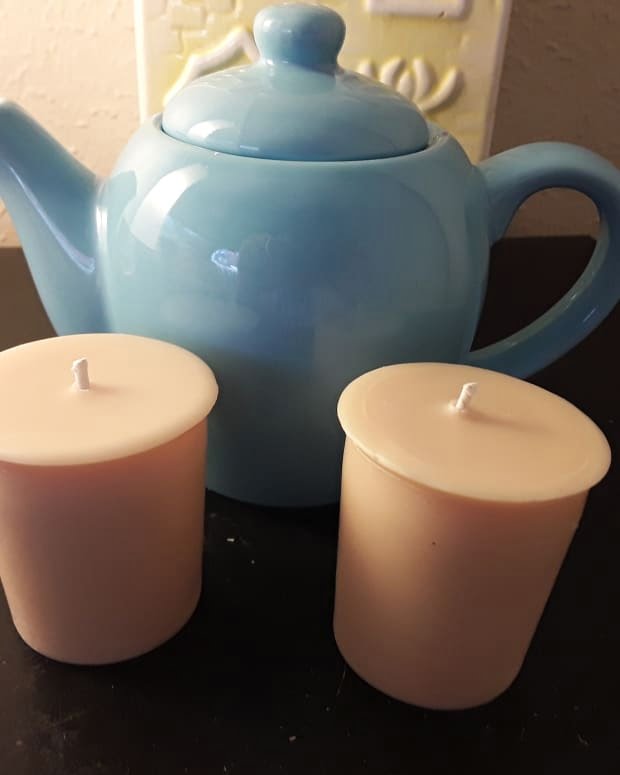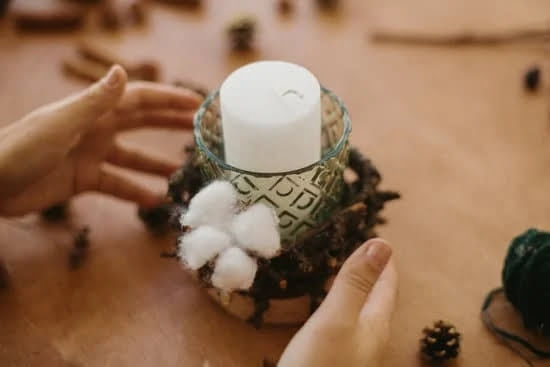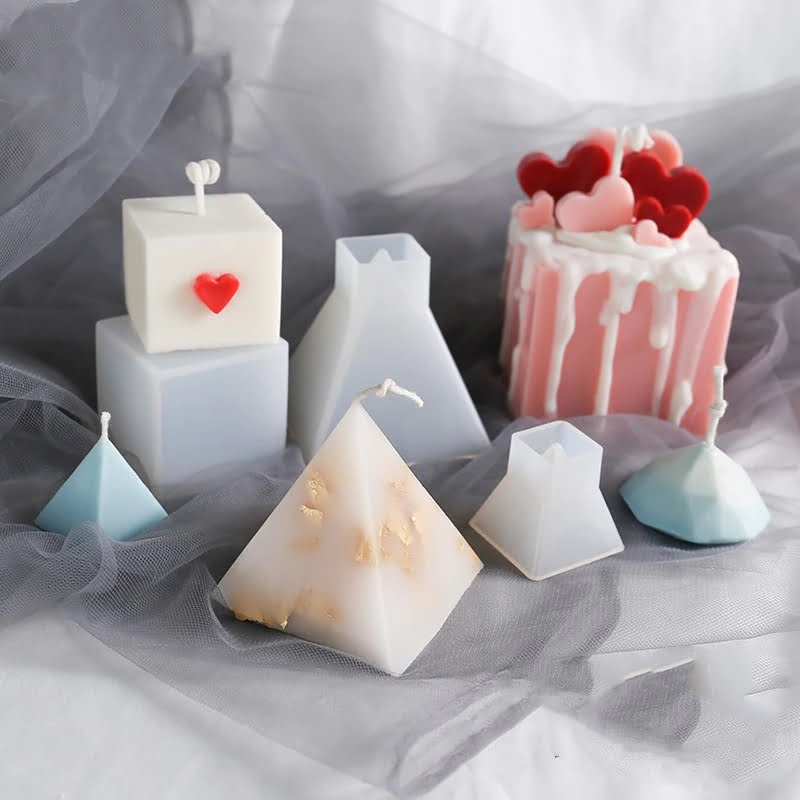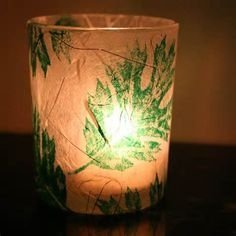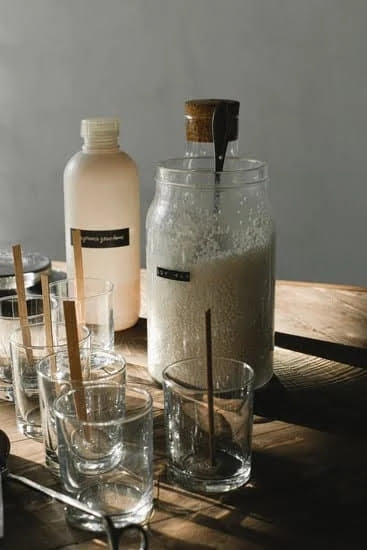Can you use extract in candle making? This question has been buzzing among DIY enthusiasts who are always on the lookout for new and innovative ways to create unique candles. Extracts, derived from various natural sources, have gained popularity as a potential ingredient in candle making. In this article, we will delve into the world of using extracts in candle making, exploring the range of possibilities and benefits they bring to the craft.
When it comes to extracts, there is an array of options available, each offering its own distinct scent and properties. Extracts can be obtained from plants, fruits, flowers, and more. They possess concentrated aromatic compounds that can lend beautiful fragrances to your candles. Imagine lighting a lavender-scented candle or filling your space with the sweet aroma of vanilla; these are just some examples of what extracts can bring to your creations.
Choosing the right extract for your candle project is crucial for achieving desired results. The compatibility with different wax types, desired fragrance strength, and overall aesthetic appeal all play integral roles in selecting extract varieties. Furthermore, incorporating extracts into your candle wax requires careful attention to techniques such as temperature control and proper stirring methods.
Using extracts goes beyond simply adding fragrance; it’s an art form that allows you to enhance scents by layering different extract aromas or infusing actual extract-infused materials like dried flowers or herbs into the wax. With safety precautions and quality control measures in mind, the possibilities are truly endless. Join us as we explore how extracts can elevate your candle making experience and unleash your creativity like never before.
Understanding Extracts and Their Properties
The Definition of Extracts
Before delving into the specifics of using extracts in candle making, it is important to understand what exactly an extract is. Simply put, an extract refers to a concentrated form of a particular substance that has been drawn out from its source material.
In the context of candle making, extracts are typically derived from natural sources such as plants, fruits, or flowers. These natural materials are processed using various techniques like distillation, infusion, or solvent extraction to obtain their fragrance compounds.
Types of Extracts Used in Candle Making
There are numerous types of extracts available for use in candle making, each with its own unique properties and characteristics. Some popular examples include essential oil extracts, fragrance oil extracts, and botanical extracts. Essential oil extracts are derived directly from plants and often offer a more natural scent profile.
Fragrance oil extracts are synthetically created fragrances that can emulate specific smells with precision and control. Botanical extracts refer to plant-based materials that have undergone extraction processes for their aromatic properties.
The Properties of Extracts
When selecting an extract for your candle making project, it is important to consider the specific properties associated with different types of extracts. One key property is scent concentration, which refers to the intensity of fragrance provided by the extract. Essential oil extracts tend to have a higher scent concentration compared to fragrance oil extracts or botanical extracts.
Another important property is longevity – how long the scent remains noticeable in the finished candle. Essential oils tend to have better longevity compared to other varieties of extract due to their more concentrated nature.
Additionally, it is crucial to understand how compatible different types of extracts are with various wax types commonly used in candle making. Certain extracts may perform better with soy wax, while others may be more suitable for paraffin wax. Compatibility can affect the quality of scent throw and overall performance of the candle.
By understanding these properties, candle makers can make informed decisions when selecting extracts for their candles, ensuring optimal fragrance and performance.
Selecting the Right Extract for Your Candle Project
When it comes to selecting the right extract for your candle project, there are several factors to consider. The choice of extract plays a significant role in determining the fragrance strength and overall aesthetic appeal of your candles. Here are some tips and guidelines to help you choose the most suitable extract for your candle making endeavor:
- Compatibility with Wax Types: Different wax types have varying abilities to incorporate fragrances. It is important to consider the compatibility of the extract with the specific wax you are using. For example, soy wax tends to have better scent throw and retention compared to other waxes, making it suitable for a wide range of extracts. On the other hand, beeswax has a natural subtle scent that may overpower certain extracts.
- Desired Fragrance Strength: Consider the intensity of fragrance you want your candles to emit. Some extracts have stronger scents than others, so it’s essential to choose an extract that matches your desired fragrance strength. If you prefer a more subtle aroma, opt for extracts with lighter notes. Conversely, if you want a more robust and long-lasting scent, choose extracts with higher concentration levels.
- Aesthetic Appeal: Keep in mind the overall aesthetic theme or design concept of your candles when selecting an extract. Certain extracts can complement specific candle colors or themes, enhancing their visual appeal. For example, lavender extract might pair well with pastel-colored candles or those designed to create a relaxing atmosphere.
To ensure compatibility and avoid any undesired effects, it is recommended to conduct small test batches using different extracts before committing to larger-scale candle production. This will allow you to evaluate how well each extract performs in terms of scent throw, longevity, and overall quality.
Remember that experimentation is key in finding the perfect extract for your candle projects. Don’t be afraid to try new combinations or customize blends by combining different aromatic extracts that complement each other’s fragrance notes. The possibilities are endless in creating unique and personalized scents that will truly set your candles apart from the rest.
The Art of Incorporating Extracts into Candle Wax
Preparing the Candle Wax
Before incorporating extracts into your candle wax, it’s important to properly prepare the wax to ensure optimal fragrance dispersion. Start by melting the desired amount of candle wax in a heat-resistant container or double boiler. It’s essential to use a heat-resistant container to prevent any accidents or damage. Keep in mind that different types of waxes have different melting points, so follow the manufacturer’s instructions for the specific wax you are using.
Adding Extracts at Specific Temperatures
Once your candle wax has melted completely, it’s time to add your chosen extract. It is recommended to add extracts at specific temperature points in order to achieve the best fragrance distribution and longevity. Generally, it is advised to add extracts when the wax is at a temperature between 180°F (82°C) and 185°F (85°C). This temperature range ensures that the extract blends well with the melted wax without evaporating too quickly.
Proper Stirring Techniques
After adding the extract into the melted wax, it’s crucial to thoroughly stir the mixture to ensure an even distribution of fragrance throughout. Use a heat-resistant spoon or spatula and gently stir in a circular motion for approximately 2-3 minutes. Pay close attention to scraping down the sides of the container as well, as this will help incorporate any extract that may have settled on the edges.
To take further steps in enhancing fragrance dispersion, consider pouring your heated mixture into smaller containers before stirring. This allows for more surface area contact with air and can aid in better scent diffusion when burning the final candles.
Remember, working quickly while stirring is necessary because as the wax cools down, it begins to solidify again. The goal is to make sure that all your melted wax is infused with your selected extract before pouring it into molds or containers.
By following these step-by-step instructions, you’ll be able to effectively incorporate extracts into your candle wax, resulting in exquisitely fragrant candles that can transform any space with their appealing scents.
Enhancing Candle Scent with Extracts
When it comes to candle making, using extracts can be a game changer in creating unique and highly fragrant candles. Not only do extracts add a delightful scent to your candles, but they also allow for endless possibilities and customization options. Here are some tips and tricks to enhance the scent of your candles using extracts:
- Layering different extract scents: One way to create a more complex and captivating fragrance is by layering different extract scents. In this technique, you can start by pouring a layer of wax with one extract fragrance, let it set partially, and then pour another layer with a different extract scent on top. This creates multiple layers of scent that blend together beautifully when burnt.
- Creating custom blends: Another way to get creative with extracts is by creating your own custom blends of scents. You can experiment with combining different extracts in various ratios until you achieve the desired fragrance profile. This allows for endless experimentation and the ability to create signature scents that are truly one-of-a-kind.
- Infusing the wax with actual extract-infused materials: For a truly potent and unique fragrance experience, consider infusing the wax with actual extract-infused materials like dried flowers or herbs. Add these dried materials to the melted wax before pouring it into the container, allowing the essence of the extracts to infuse into the wax as it solidifies. This not only enhances the scent but also adds visual interest to your candles.
- Dilute or concentrate extracts: Depending on your desired fragrance strength, you can dilute or concentrate extracts before adding them to your candle wax. If you prefer a subtle scent, dilute the extract with a carrier oil or liquid wax before incorporating it into the candle mixture. On the other hand, if you want a more intense aroma, use undiluted extracts directly in your candle-making process.
By applying these tips and tricks, you can truly elevate your candle-making game and create candles that not only look beautiful but also fill the room with captivating scents. Experiment with different extract combinations, techniques, and concentrations to find what works best for your personal preference. Let your creativity run wild in exploring the world of extracts and their amazing fragrance-enhancing possibilities.
Considerations for Safety and Quality Control in Extract Usage
When using extracts in candle making, it is important to prioritize safety measures and implement quality control practices to ensure a successful and safe final product. Here are some key considerations to keep in mind:
- Use Skin-Safe Extracts: Not all extracts are suitable for direct contact with the skin, so it is crucial to choose extracts that are labeled as skin-safe. This will prevent any potential allergies or skin irritations when using the candles. Look for extracts that are specifically designed for cosmetic use or have been tested for skin safety.
- Flammable Precautions: Some extracts, particularly those derived from alcohol-based sources, can be flammable. It is essential to take proper precautions when handling these extracts during the candle making process. Store them away from open flames, heat sources, and always follow the manufacturer’s instructions for storage and handling.
- Dosage Levels: Follow recommended dosage levels provided by the extract manufacturer to ensure optimal scent strength and avoid overpowering fragrances that may cause headaches or irritations. It is best to start with a smaller amount of extract and gradually increase if necessary, taking note of any changes in scent strength.
- Quality Control Tests: To maintain consistency and quality in your extract-infused candles, conduct regular quality control tests throughout the process. This can include burn tests to assess scent throw, color integrity checks, and overall performance evaluations of the final product. Keep detailed records of your findings to make any necessary adjustments in future batches.
Ensuring safety and quality control measures are followed when incorporating extracts into candle making will help you create candles that not only smell great but also meet high standards of craftsmanship. By prioritizing these considerations, you can enjoy the creative freedom that extracts offer while also providing customers with safe and delightful scented candles.
Table
| Consideration | Description |
|---|---|
| Skin-Safe Extracts | Choose extracts that are labeled as skin-safe to prevent allergies or skin irritation when using the candles. |
| Flammable Precautions | Take proper precautions when handling extracts derived from alcohol-based sources to prevent any potential fire risks. |
| Dosage Levels | Follow recommended dosage levels provided by the extract manufacturer to ensure optimal scent strength and avoid overpowering fragrances. |
| Quality Control Tests | Conduct regular burn tests, color integrity checks, and overall performance evaluations to maintain consistency and quality in extract-infused candles. |
Showcasing Success Stories
In this section, we will explore real-life examples of candle makers who have successfully incorporated extracts into their candle projects. These success stories serve as inspiration for fellow DIY enthusiasts to unleash their creativity and experiment with using extracts in their own candle making endeavors.
One example of a stunning extract-infused candle project is the Lavender Bliss Candle by Emily’s Candles. Emily, an experienced candle maker, decided to combine the delicate scent of lavender with her favorite soy wax blend. By adding a high-quality lavender extract at the optimal temperature point during the melting process, she was able to achieve a beautifully fragrant lavender-scented candle that brought a sense of relaxation and calmness into any room.
Another success story comes from Daniel’s Crafts. Daniel used vanilla extract in his soy wax candles to create a warm and inviting atmosphere with a touch of sweetness. He carefully selected a vanilla extract that was compatible with soy wax and added it at just the right concentration to ensure the perfect balance between fragrance strength and longevity. The result was a line of vanilla-scented candles that quickly became popular among customers for their comforting aroma.
| Candle Maker | Candle Name | Extract Used | Resulting Fragrance |
|---|---|---|---|
| Emily’s Candles | Lavender Bliss Candle | Lavender Extract | Delicate and Relaxing Lavender Scent |
| Daniel’s Crafts | Sweet Vanilla Candle | Vanilla Extract | Warm and Inviting Vanilla Fragrance |
These success stories demonstrate the endless possibilities and creative potential of using extracts in candle making. By following their footsteps, you can create your own unique and fragrant candles that will delight both yourself and your customers.
Remember to choose extracts that are compatible with your wax type, consider fragrance strength, and experiment with layering or blending different scents for a truly personalized candle experience. Let these success stories inspire you to unleash your creativity and take your extract-infused candle projects to new heights.
Exploring Alternative Uses for Extracts in the Candle Making Process
In addition to providing fragrance, extracts can be used in a variety of alternative ways in the candle making process. By thinking outside the box and experimenting with different techniques, candle makers can create unique and visually appealing candles that go beyond traditional fragrances.
One alternative use for extracts is coloring candles with fruit or plant extracts. Instead of relying on artificial dyes or colorants, natural extracts can add vibrant hues to your candles. For example, beetroot extract can produce a beautiful red or pink color, while spirulina extract can create shades of blue or green. By using natural extracts for coloring, candle makers can create eco-friendly and sustainable candles that appeal to environmentally conscious consumers.
Another exciting possibility is using extracts in the dyeing process of candles. Dyeing involves dipping the finished candle into a mixture of wax and dye to give it a unique and attractive appearance. By replacing synthetic dyes with fruit or plant extracts, candle makers can achieve a more natural and organic look for their candles. This technique is especially popular among those who prefer all-natural products or want to incorporate an earthy and rustic vibe into their candle designs.
Furthermore, extract-infused candle toppers are gaining popularity as an innovative way to incorporate scents into your candles. These decorative pieces, typically made from soy wax infused with various extracts, are placed on top of a burning candle to release their aroma. This approach allows for greater control over fragrance intensity and enables candle makers to experiment with different combinations of scents by mixing and matching extract-infused toppers.
By exploring these alternative uses for extracts in the candle making process, artisans have the opportunity to elevate their craft and offer consumers unique products that stand out from the crowd. The versatility of extracts allows for endless creativity in both visual aesthetics and scent profiles, giving candle makers the chance to truly personalize their creations.
As always when working with extracts, it is essential to follow safety guidelines and conduct quality control tests to ensure the final product meets both industry standards and customer expectations. With the right precautions and a spirit of curiosity, candle makers can harness the potential of extracts to create stunning, fragrant, and visually captivating candles that delight customers and showcase their craftsmanship.
Conclusion
In conclusion, using extracts in candle making can open up a world of possibilities for DIY enthusiasts looking to create unique and fragrant candles. Throughout this article, we have explored the various types of extracts available and their properties, as well as tips on selecting the right extract for your project. We have also discussed techniques for effectively incorporating extracts into candle wax and enhancing scent using unconventional methods.
By incorporating extracts into your candle making process, you have the opportunity to unleash your creativity and personalize your fragrance experience. Whether you choose to layer different scents, create custom blends, or infuse your wax with dried flowers or herbs, extracts offer endless opportunities for experimentation and innovation.
However, it is important to prioritize safety and quality control when using extracts in candle making. Ensure that any extracts used are skin-safe and follow recommended dosage levels. Additionally, conduct quality control tests to ensure your final product is free from any undesirable effects or inconsistencies.
Overall, using extracts in candle making allows DIY enthusiasts to take their skills to the next level. So go ahead and explore the wonderful world of fragrance by incorporating extracts into your candle projects. Unleash your creativity and let your candles come alive with unique scents that reflect your individual style and personality.
Frequently Asked Questions
Can I use lemon extract in candles?
Yes, lemon extract can be used in candles. Lemon extract is made from the peels of lemons and contains the essential oils found in the fruit. These essential oils release a refreshing citrus scent when heated, making it a popular choice for candle-making.
Lemon-scented candles can create a vibrant and uplifting atmosphere in any space. When using lemon extract in candles, it is important to follow proper candle-making procedures to ensure safety and achieve the desired fragrance intensity.
Can you put almond extract in a candle?
While almond extract has a pleasant aroma, it is not typically used in candle-making due to its high alcohol content. Most commercial almond extracts contain 35-40% alcohol, which can be highly flammable when ignited as part of a candle wick.
The use of high-alcohol content extracts like almond extract may increase the risk of fire hazard when incorporated into candles. Therefore, it is recommended to avoid using almond extract specifically designed for culinary purposes in candle-making projects.
Can you use orange extract in candles?
Yes, orange extract can be used in candles and is often chosen for its bright and zesty scent that can create an invigorating atmosphere. Orange extract is derived from orange zest or peel and contains the essential oils responsible for its distinct fragrance.
Incorporating orange extract into candle wax or using pre-scented orange wax allows you to capture the delightful aroma of oranges when burning the candle. However, as with any fragrance ingredient, it is important to carefully measure and properly follow candle-making guidelines to ensure safety and achieve optimal scent performance when working with orange extract in candles.

Welcome to my candle making blog! In this blog, I will be sharing my tips and tricks for making candles. I will also be sharing some of my favorite recipes.

